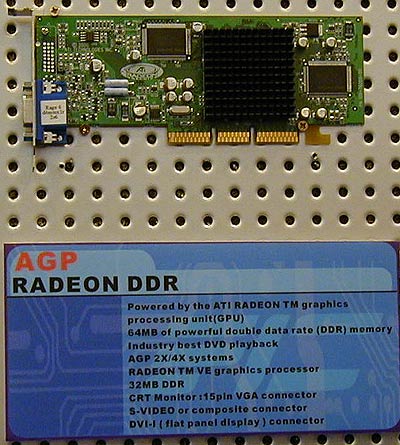MSI
Motherboard maker MSI was on hand with their entire product line, including
several upcoming boards. Of primary interest was a pre-production NVIDIA nForce
board in micro-ATX format. Also on display was an AMD 760MP board, called the
K7D Master-LR. With far fewer features targeted towards a server environment
than Tyan's K7 Thunder, the K7D should appeal more to the performance
enthusiast. Four DIMMs, AGP Pro, PCI64, optional LAN, and optional IDE RAID
complete the package, which should be available before the end of the year. Even
more exciting is the fact that MSI is shooting for a sub-$200 price point,
making a dual Athlon system an attractive option indeed.
On the graphics front, MSI featured the MS-822 GeForce3 with 64MB of DDR memory
clocked at a 460MHz equivalent. According to MSI, the GeForce3 is now cheaper
to produce than the GeForce2 Ultra, so they have discontinued their Ultra
product in favor of a GeForce2 Pro. Based on their product roadmap, the 64MB
GeForce3 should remain MSI. s graphics flagship for the rest of the
year.
ASUS
One of the largest (and busiest) booths at the show belonged to ASUS. Like
MSI, ASUS showcased their platform built around the nForce chipset. Intel's i845
platform also littered the product display in addition to a micro-ATX variant
based on the i850 chipset called the P4T-M.
FIC
Without an i850-based board, FIC has focused their attention on the i845
Pentium 4 and universal Socket 370 Tualatin boards. Even more interesting
though, was the presence of ATI's RADEON card in the FIC graphics display.

Recently, ATI announced that they would exit the board
manufacturing business, opting instead to focus resources on chip design. With this
decision comes the obvious need for outsourcing, in much the same way as NVIDIA has
done. FIC's interest in becoming a board manufacturer is significant in that it
should aide ATI in remaining competitive with NVIDIA's aggressive product cycle.
Of course, this means that ATI has less control over the quality of components
used - a problem NVIDIA has encountered with poor filters resulting in sub-standard
2D quality.
